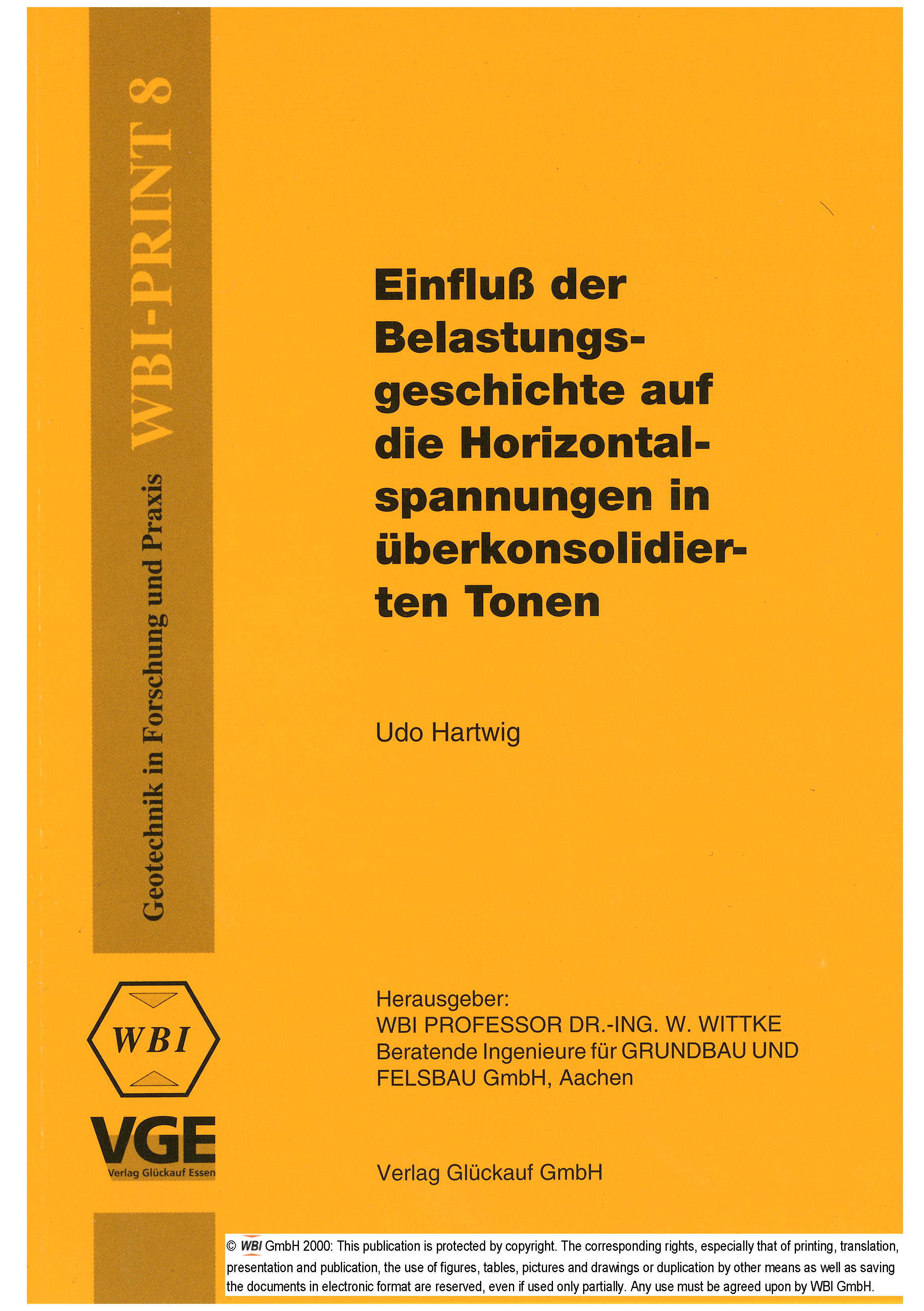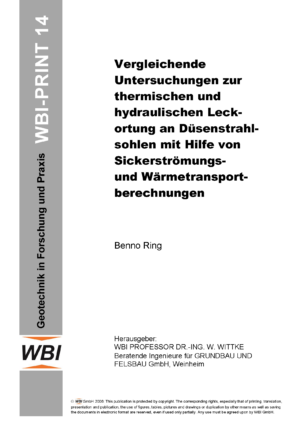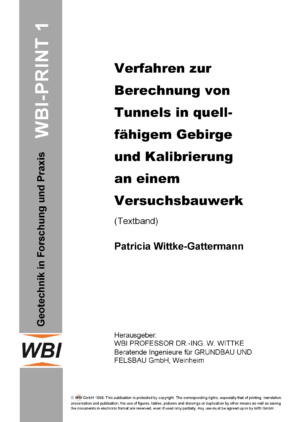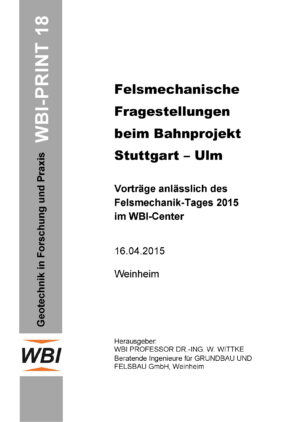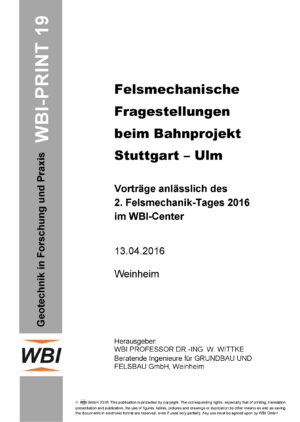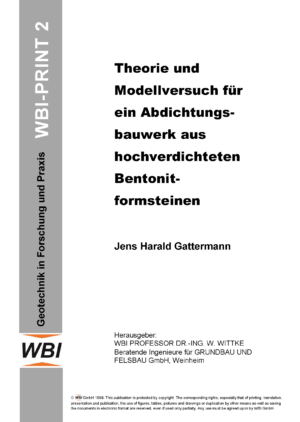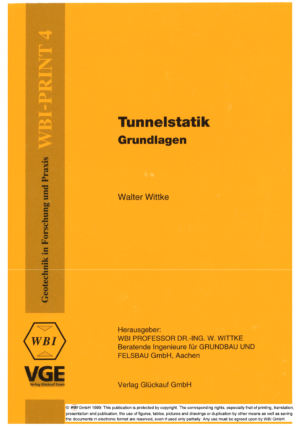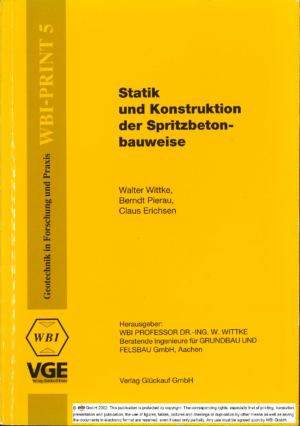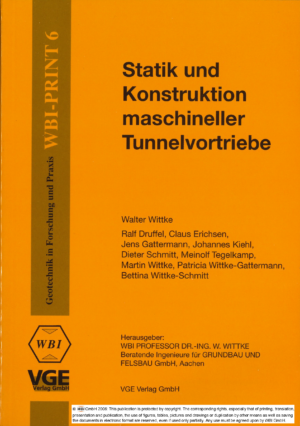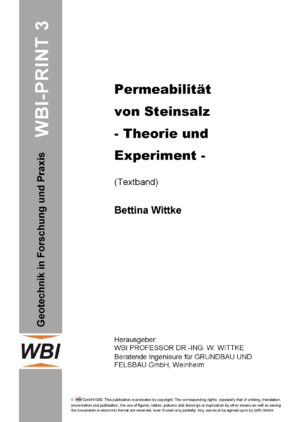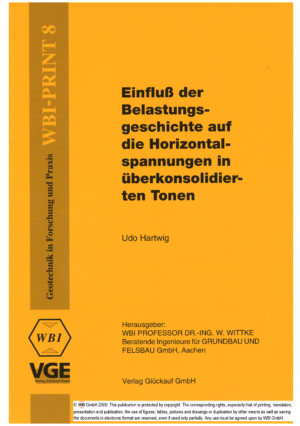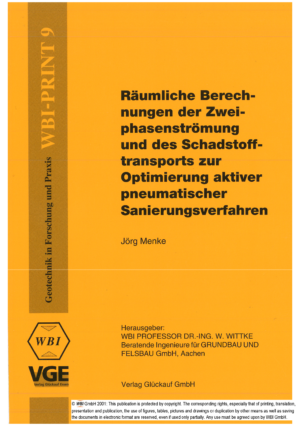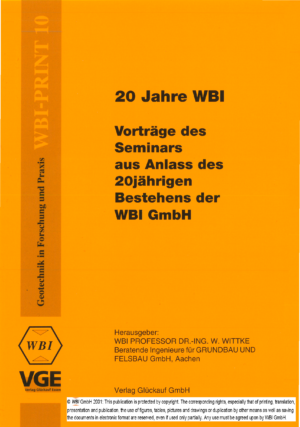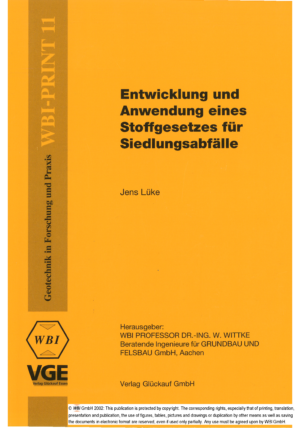Summary:
The safe and economic design of geotechnical structures in over consolidated clays, for example building pit walls, shafts or tun nels, requires a reliable knowledge of the size of the effective horizontal stresses in this clays. The more rigid the structure, the more these stresses correspond to the expected loading of the structure.
A soil is in an overconsolidated state if the former vertical loading was larger than that at present. Reasons for an overcon soldation may be the erosion of an overlying soil, or a former su perimposed ice layer in the course of a glacial epoch. The influ ence of an overconsolidation on the mechanical behaviour of the soil is stronger, the greater the difference between the former and the present effective vertical stresses.
In principle it has been known for long, that the horizontal stresses in clays in an overconsolidated state may be signifi cantly greater than in clays in a normally consolidated state. However, no reliable prediction methods exist to determine the size of the stresses, so that it’s often necessary to use empirical values for the design of structures.
The analytical formulations published in the technical press, which describe the dependence of the coefficient of earth pressure at rest (ratio of the effective horizontal stress to the effective vertical stress) on the angle of shear friction , and the overcon solidation ration OCR, can only in simple cases applicably deter mine the interrelation between the horizontal stresses and the loading history. It’s also difficult to measure the horizontal stresses in field tests with the presently available testing tech niques. The reason for that is the strong relationship of the stress state to the strains, which will be frequently already be influenced during the installation of the testing apparatus into the soil.
Because of uncertainties of the horizontal stresses in overcon solidated clays, the assumed loads for the shaft “Gorleben 2”, which lies approximatly in a depth of 60 m to 120 min the glacial preloaded “Lauenburger Ton”, were checked by an extensive measur ing program in the secondary lining of steel rings in the shaft.
With the results of this convergence measurement, which was made in a total of 33 cross-sections, it was possible to derive the radial loading of the secondary lining and then to compare it with the assumed loads.
In the presented paper, the measured effective horizontal stresses in the “Lauenburger Ton” in the area of the shaft “Gorleben 2” were interpreted with the help of two soil mechanical stress strain laws. With these two laws, the Modified Cam Clay model and the Bounding Surface model, it’s possible to comprehend the influ ence of the loading history on the effective horizontal stresses . The parameters required for these models were derived from labora tory investigations on treated samples from the “Lauenburger Ton “.
The measured stress and strain paths in the laboratory tests could be simulated qualitatively with both models. With the Bounding Surface model it was also possible to obtain good quantitative correspondences with the test results.
With both stress-strain laws the loading history in the area of the shaft “Gorleben 2” was simulated. The calculated horizontal stresses for different depths were compared with the radial load derived from the results of the measured convergences in the sec ondary steel lining of the shaft “Gorleben 2”. It was possible to simulate the radial load by calculations with the Modified Cam Clay model. With the Bounding Surface model no good correspon dences with the derived radial load were produced.
By this comparison it has however tobe taken into consideration, that some influences which were important for the loading history of the “Lauenburger Ton”, cannot be taken into consideration with these stress-strain laws. Among other things this includes time dependent effects like creep or influences of temperature (for in stance freezing). Also influences resulting from physical and chemical weathering cannot be comprehended. With this background you can describe the correspondences obtained as remarkably good.
The procedure shown for the prognosis of effective horizontal stresses in overconsolidated clays represents an essential advance regarding the choice of realistic loads for the design of geotech nical structures in overconsolidated clays.


